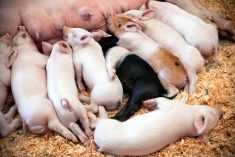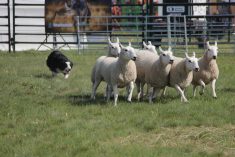Steers deliberately infected with BSE at a Lethbridge laboratory have all died of the disease as expected.
The Canadian Food Inspection Agency launched the project nearly three years ago by surgically infecting cattle with BSE.
The steers were observed from the time of infection until they developed symptoms.
By the time they were 24 to 27 months old, they were so ill they had to be put down. They were euthanized between September and November.
Senior pathologist Stefanie Czub said the disease would have taken a slower path if the animals had consumed infected feed.
Read Also

Dennis Laycraft to be inducted into the Canadian Agricultural Hall of Fame
Dennis Laycraft, a champion for the beef industry, will be inducted into the Canadian Agricultural Hall of Fame this fall.
“It was a very different scenario because we knew these animals were infected so we were watching them very carefully.”
Behavioral changes were subtle in the early stages of the disease.
“It was as if they were spaced out,” she said. “They would stand and stare for quite a while, then they would go back to normal.”
The animals developed more typical BSE symptoms such as swaying, stumbling and fearfulness as the disease progressed.
“All of them were very fearful and startled by their own shadow or by things which were in their pens always,” she said.
BSE, like variant Creutzfeld Jakob disease in humans, appears to affect the brain’s fear centre, but scientists don’t know why.
The disease progresses quickly as the animals lose their sense of orientation and space.
“They would realize there was a gap in the concrete and they would refuse to step over or would jump like it was a wall of two metres,” Czub said.
The second part of the study involved testing the brains and carcasses.
Rapid diagnostic tests were used and all the samples showed typical BSE lesions and other symptoms attributed to the disease.
Blood and urine were collected but none have been used to test the efficacy of live tests.
Genetic samples were collected to assess susceptibility and possibly the ability to breed for resistance. Samples will also be shared among scientists for further research.
Atypical BSE cases are also being studied. Canada and the United States have each had two atypical cases, and further research is looking at this strain, which has been found in about 100 cattle around the world.
More animals will be infected with the atypical form to study it further.
“In our atypical cases we found similar lesions in the brain lesions but in the molecular testing they were different,” Czub said.















